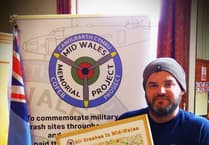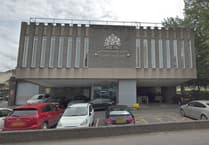AN excavation at one of Wales’ most significant historical sites has drawn archaeologists from across the globe to rural Ceredigion.
Hosted by the Strata Florida Trust, the field school has for the past month been offering people an all-inclusive archeology experience for anywhere between one day to four weeks.
Up to 50 people from across the world have taken part in the dig in the Strata Florida courtyard - Many of them stayed for the full four weeks, sleeping in tents and camper vans in the village of Ystrad Meurig, travelling to local libraries on their days off, and touring Wales’ iconic heritage sites - Dolaucothy mines, Llanddewi-Brefi and Carreg Cennen.
Working five days a week, the group of excavators have uncovered a variety of pottery, slate and stones, animal bones and have also uncovered an old aqueduct running through the dig site.
The ‘Westminster of Wales’ has deep connections to Welsh heritage and culture. It is here that welsh princes were brought together to swear loyalty to Llywelyn Ap Iorweth’s son Dafydd in 1238 - the first imagining of a united Wales.
One of the earliest Welsh historical sources, the Brut y Tywysogion was written at the abbey. As well as stories which would later go on to form the Mabinogion.
Excavation director Quentin Drew said: “Strata Florida is hugely significant, it holds this magical position in Wales. It’s here we saw the first voicings of an independent Wales, where its greatest princes were buried, where stories which led to the Mabinogion were written. Strata Florida, the ‘Westminster of Wales’ pushes Welsh identity.
This is the third year of excavations at the Strata Florida Abbey, and volunteers insist there is ‘still much more to be uncovered.’
One of those volunteers is Kay Woodhouse, who has been particularly interested in the aqueduct uncovered at the dig.
Ms Woodhouse said: “I find the structure that we’re uncovering really exciting, it appeals to me more than the bits we’re taking out of the ground. The drainage system is particularly interesting to me, it’s clear that a drain system was built on top of the mediaeval aqueduct, it’s likely to have been built by the farmers who owned the land in the 19th century.
Ms Stroma Henderson-Hyson-Reid got interested in archeology after she retired, she has attended every dig at Strata Florida since they begun in 2019, she said: “I get really engrossed in the site and uncovering its history, I found a 16th century sewing thimble which protects the fingers from the needle as it’s pushed through fabric.
“It’s attracted people from across the world and of all different ages, we’ve had people from Ireland, New Zealand and America here during these four weeks.”
The field school excavations will return in June and July of 2024, with specific dates coming soon.
Ms Carys Aldous-Hughes said next year’s dig could “potentially cover new areas surrounding the Abbey.”





Comments
This article has no comments yet. Be the first to leave a comment.